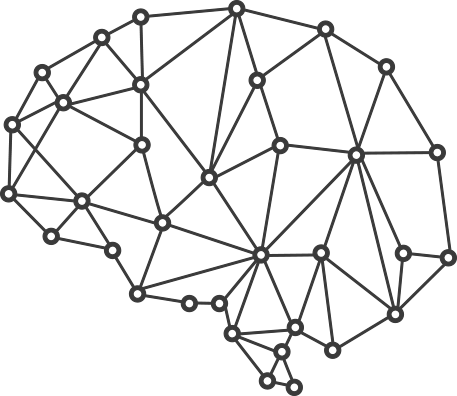It’s natural for intrusive thoughts to occasionally cross your mind. These are typically thoughts you’d never act on and don’t align with your morals or values. However, for someone with harm obsessive-compulsive disorder, or harm OCD, these thoughts aren’t fleeting. Instead, they become a relentless cycle of fear and doubt that creates great distress and leads to behaviors meant to prevent imagined harm.
What is Harm OCD?
Harm OCD is a type of obsessive-compulsive disorder that causes people to experience disturbing and unwanted thoughts, images, or urges about harming themselves or others. These intrusive thoughts can feel so real and alarming that individuals may misinterpret them as a sign they could act on them. This can lead to debilitating anxiety and a desperate need to calm their fears through compulsive actions, like avoiding certain situations.
Understand that people with harm OCD are not dangerous. In fact, they tend to be extra cautious to ensure everyone’s safety, including their own. This overwhelming fear of being responsible for harm puts them at a lower risk of acting on their intrusive thoughts compared to the general population.
What Can Cause Harm OCD?
OCD doesn’t have a single cause, and harm OCD is no exception. Several things can increase the likelihood of developing this condition, such as:
- Genetics: Research found that four specific genes, NRXN1, HTR2A, CTTNBP2, and REEP3, may affect how certain brain pathways work. These pathways are linked to behaviors like obsessive thinking and compulsions.
- Brain Chemistry: Researchers have found that in people with OCD, glutamate (speeds up brain activity) levels are too high, and GABA (slows down brain activity) levels are too low. This imbalance might make intrusive thoughts and compulsions harder to control.
- Past Trauma: Difficult life experiences, such as physical or emotional abuse, can increase the risk of developing OCD. Trauma can create intense stress and a need to feel in control, thus encouraging obsessive behaviors.
- Personality Traits: People with perfectionistic traits are more likely to develop OCD. Perfectionism is the need to do things “just right,” and studies show this trait is much higher in people with OCD.
Harm OCD Signs and Symptoms
Harm OCD can manifest in two ways. Some people worry they might accidentally harm themselves or others, like through a careless mistake. Others fear they might act on an involuntary urge or impulse to harm, even though this thought is deeply disturbing and completely unwanted. Either way, a cycle of obsessions and compulsions often begins, which can feel devastating and difficult to escape.
Harm OCD Obsessions
Obsessions in harm OCD include distressing thoughts, images, or urges related to causing harm. These thoughts are intrusive, meaning they pop up without warning and feel impossible to control. Here are some common examples:
- Fear of accidentally harming someone while driving, like hitting a pedestrian, even when there’s no evidence of this happening.
- Worry about unintentionally harming someone, such as stabbing them while handling knives in the kitchen.
- Fear of contaminating or poisoning others, like improperly washing fruits or vegetables before serving them.
- Intrusive images of violence, such as imagining pushing someone off a high ledge or hurting a stranger in public.
- Fear of losing control and harming a pet or small child.
- Thoughts about causing harm in their sleep, such as smothering a partner or child unintentionally.
These obsessions are not reflections of the person’s character or intentions. In fact, the distress caused by these thoughts comes from how strongly the individual values safety and morality.
Harm OCD Compulsions
Compulsions are behaviors or mental actions that people with harm OCD engage in to reduce the anxiety caused by their obsessions. While these behaviors might provide temporary relief, they ultimately reinforce the cycle of OCD. Common compulsions include:
- Mentally reviewing past actions to ensure they didn’t harm anyone.
- Seeking reassurance from others like asking if they are a good person or if their actions seem safe.
- Avoiding situations, objects, or people that might trigger harm-related thoughts, like avoiding driving, sharp objects, or crowds.
- Performing mental rituals, such as repeating phrases or prayers to “cancel out” intrusive thoughts.
These compulsions are exhausting and time-consuming, often taking over a person’s daily life.
How to Treat Harm OCD
First-line treatments for harm OCD are typically medications and psychotherapy, but for those who do not respond to these options, alternatives like transcranial magnetic stimulation (TMS) are available. Here’s a closer look at how to treat harm OCD.
Medication
Medications, specifically, selective serotonin reuptake inhibitors (SSRIs), are a common treatment for OCD. SSRIs increase serotonin levels in the brain, which can help reduce OCD symptoms over time. Studies suggest that 40%-70% of people respond positively to their first trial of an SSRI. Some medications that are commonly prescribed for OCD include:
- Fluvoxamine (Luvox®)
- Fluoxetine (Prozac®)
- Sertraline (Zoloft®)
- Paroxetine (Paxil®)
- Citalopram (Celexa®)*
- Clomipramine (Anafranil®)
- Escitalopram (Lexapro®)
- Venlafaxine (Effexor®)
When taking medication for your OCD, it’s important that you work closely with your doctor to get the best outcome. These medications can take several weeks to show results, and finding the right one may require some trial and error.
Psychotherapy
Exposure and Response Prevention (ERP) is considered the gold standard for treating different types of OCD, including harm OCD. This type of therapy helps individuals confront their fears and obsessions without resorting to compulsions. For example, someone with harm OCD might be guided to expose themselves to triggers. These could include thinking about intrusive thoughts like “What if I harm someone?” or interacting with a potentially anxiety-provoking object, like a kitchen knife.
Instead of performing compulsions to reduce distress, ERP helps patients sit with these uncomfortable feelings and learn that they do not need to act on them. Over time, this can reduce the intensity of the obsessions and the need for compulsions. ERP can be done in different ways, including:
- In vivo (real-life exposure)
- Imagination-based exposure
- Virtual or augmented reality
The goal of ERP is to equip patients with long-term strategies that they can use to manage their OCD symptoms.
Transcranial Magnetic Stimulation
Roughly 50% of people with OCD don’t respond to traditional treatments like therapy and medication. In cases like these, there are alternatives to consider, like TMS.
TMS is a non-invasive procedure that uses a device placed against the scalp to deliver magnetic pulses to specific brain areas that are linked to OCD. These pulses help modulate brain activity that is thought to contribute to obsessions and compulsions.
The treatment is painless and does not require anesthesia. During a session, patients may feel a tapping sensation on their head. Side effects, if any, are mild and temporary, with headaches being the most common. After treatment, patients can return to their day without interruption.
Manage Your Harm OCD with Pulse TMS
Living with harm OCD can not only be disruptive to your life, but it can also be frustrating, especially when it feels like no one understands what you’re going through. Finding the right help is fundamental, and it starts with a compassionate team that recognizes the struggles you’re experiencing.
At Pulse TMS, we offer medication management and cutting-edge treatments like TMS, so you can gain control over your diagnosis and live a more stress-free life. We also believe in personalized care because no two experiences with OCD are the same. Regardless of your unique situation, our team is here to create a plan that works for you. Contact us today to learn more.
Let’s Discuss Treatment Options.



